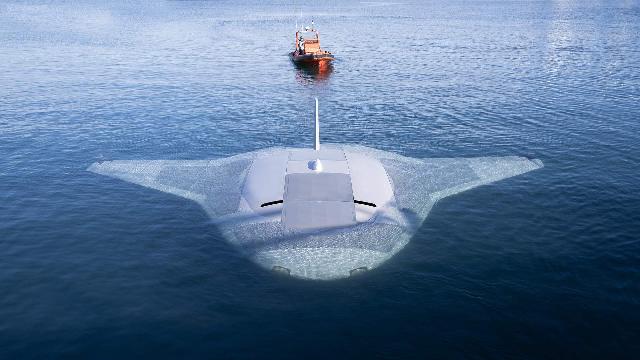A number of countries are developing ultra-large marine drones
Recently, reports of ultra-large (weighing more than 10 tons) marine drones, the so-called autonomous uninhabited underwater vehicles (ANPA), have often appeared in the media space. So, in early May 2024, it became known about the tests in the United States of the ultra-large underwater drone Orca ("Killer Whale") from Boeing. Earlier this February, the Advanced Development Agency DARPA and Northrop Grumman conducted tests of the Manta Ray drone. Izvestia investigated how far developments in this area have progressed and how things are with Russian analogues.
US developments
In total, the US Navy ordered six Orca vehicles with the following characteristics: length 26 m, width 3 m, displacement 80 tons. The cruising range is about 6.5 thousand nautical miles at an economical speed of about three knots, while the maximum speed is eight knots. The autonomy reaches several months. A distinctive feature is the modularity of the load of this device, which allows it to be used to solve a wide range of tasks. That is, depending on the equipment, the Killer Whale will be able to lay mines, conduct mine, anti-submarine and anti-ship operations, carry out reconnaissance and solve a whole range of other tasks. The device is equipped with a diesel-electric power plant with lithium-ion batteries, which are charged from diesel generators when running in a surface position. The Americans will have to develop concepts of operations for such drones, create payload modules and integrate them into the drone. In the near future, they plan to work out group actions of such robotic devices on these ANPA.
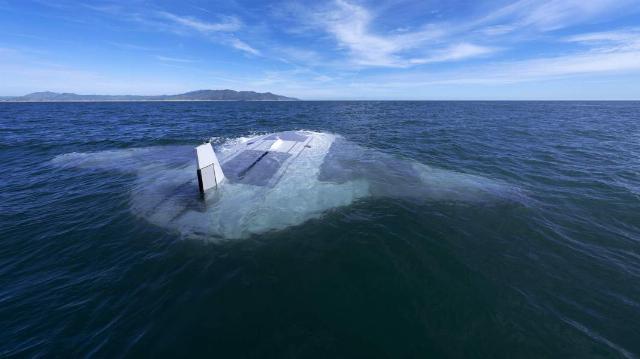
The American underwater vehicle Manta Ray during testing
Image source: Photo: Northrop Grumman
The characteristics of the Manta Ray underwater vehicle being created by Northrop Grumman at the request of the Pentagon are still unknown. It looks like a giant stingray. It is assumed that this is a modular underwater drone capable of carrying a variety of loads, depending on the tasks set.
Other countries
A number of other countries are also engaged in the development and creation of ultra-large ANPA. Thus, South Korea presented a model of the Combat device from Hanwha Ocean with a displacement of 60 tons and a length of 23 m at the MADEX-2023 exhibition in the UAE. It has an air-independent power plant and lithium-ion batteries, which will allow it to stay underwater for a long time. Two torpedoes on board the ANPA and a sonar station will enable Combat to fight surface and underwater enemies. At the same exhibition, the Chinese shipbuilding corporation CSSC for the first time showed an image of a heavy prototype designated as CSSC-705. The dimensions, displacement and type of the power plant are unknown.
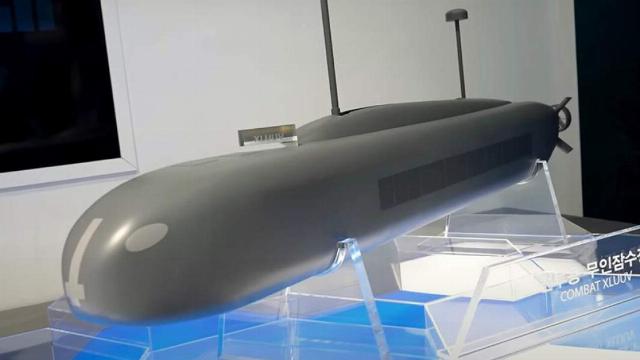
Autonomous uninhabited Combat underwater vehicle from Hanwha Ocean Company from South Korea
Image source: Photo: Naval News
In May, the UUV300CB underwater vehicle from the Chinese company Poly Technology with a length of 11.5 m, a diameter of 1.6 m and a weight of 50 tons was presented at the DSA naval exhibition in Malaysia. The electric motor allows you to reach a maximum speed of up to 12 knots. The device can dive to a depth of 300 m and travel up to 450 nautical miles. The UUV300CD variant equipped with torpedo tubes is also shown.
North Korea does not lag behind other countries in the creation of combat underwater robots and last year conducted two tests of the Haeli-1 (Tsunami-1) and Haeli-2 (Tsunami-2) attack vehicles. The characteristics are not disclosed, it is known that the devices have a range of up to 600 km and 1000 km, respectively.
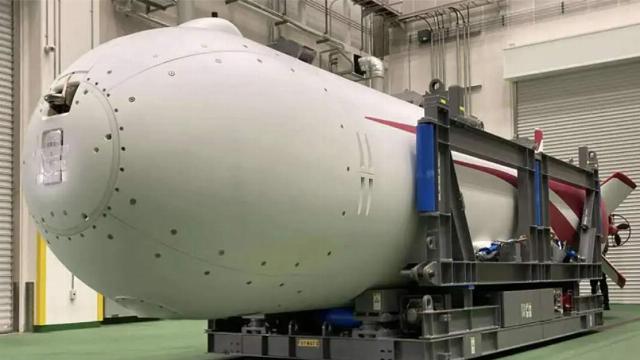
Japanese autonomous uninhabited underwater vehicle Long Endurance
Image source: Photo: Naval News
In early May, the Japanese Defense Ministry's Technology and Logistics Agency (ATLA), together with Mitsubishi, presented the 10 m Long Endurance ANPA. It is believed that this device can move underwater for a whole week at a speed of 10 knots. Work is underway to create ultra-large underwater drones in India, the UK and Australia.
And how are things in Russia?
Perhaps the most famous domestic super-large ANPA is Poseidon. This is a "Doomsday weapon", that is, in the event of a nuclear attack, it will have to reach the territory of the United States and produce an atomic explosion. As a result, a radioactive wave of enormous size will appear, sweeping away everything in its path. Poseidon supposedly has a mass of 100 tons, a length of 25 m, is capable of diving to a depth of up to a kilometer and has a speed of 60-70 knots. It can be assumed that it can carry a different load. And thanks to its engine, it can operate on the sea for a long time.
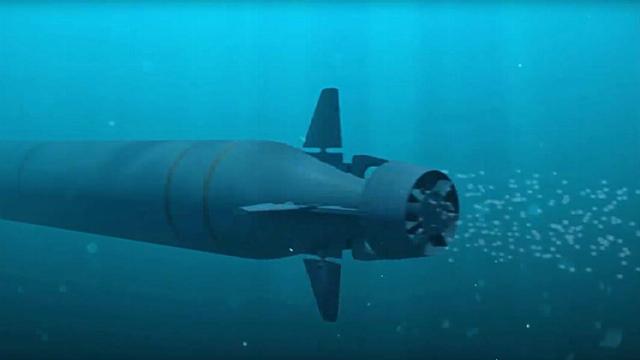
Ocean multi-purpose Poseidon system
Image source: Photo: TASS/Ministry of Defense of the Russian Federation
Another super-large domestic device is the Rubin "Surrogate" created in the Central Design Bureau of MT with a displacement of 40 tons and a length of about 17 m. It is being created to practice anti-submarine operations by the Russian Navy (previously, the Soviet Fleet included special target boats). It can also solve communication and reconnaissance tasks, separately from the carrier submarine, ensuring the secrecy of the latter. At the Army-2022 exhibition, the concept of the Arcturus nuclear submarine was presented, on which two "Surrogates-B" were placed. The letter B stands for "Slave".
It is possible that within the framework of the Harmony project, the purpose of which is to create marine underwater protected areas to ensure the deployment of nuclear-powered missile submarines, ultra-large underwater vehicles may also be created. Another little-known project of the Russian ANPA is the Cephalopod, presumably designed to combat enemy submarines.
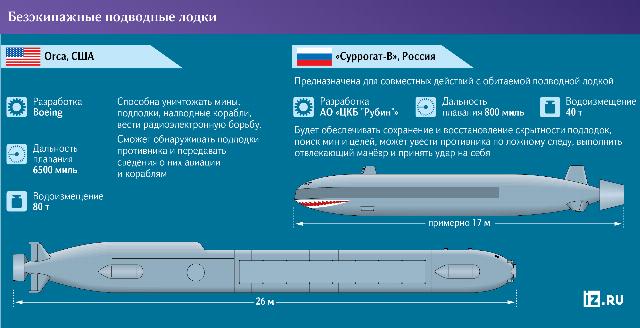
The mass introduction of ultra-large underwater vehicles, which are objectively cheaper than existing nuclear and non-nuclear submarines, will allow in the future to saturate fleets with military equipment capable of controlling significant sea areas. At the same time, it will be possible to free up submarines with crews on board to solve more important tasks.
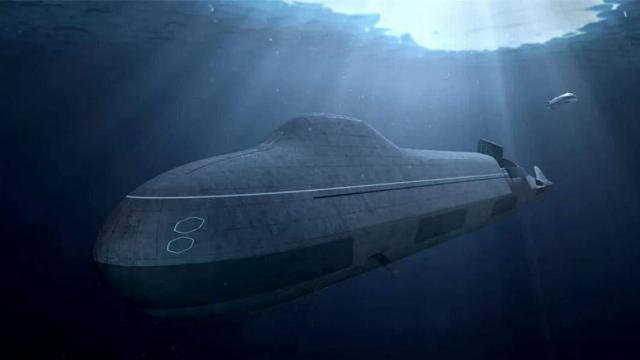
The submarine "Arcturus" is submerged. The concept of the Central Design Bureau of MT Rubin
Image source: Photo: CB MT Rubin
All of the above super-large underwater drones are currently not ready-made elements of the combat fleet. So far, concepts of their use, construction technologies are being developed, and the place of drones in the general system of fighting at sea is being determined. It is necessary to develop control systems for such objects, including those using artificial intelligence technologies. We can say that these are rather demonstrators of promising technologies, although not so far in the future.
In general, we can currently observe the creation of a new generation of marine underwater weapons. In the near future, the expanses of the world's oceans will be plowed by underwater terminators, ready to destroy both various enemy vessels and objects, as well as each other.
Dmitry Boltenkov
